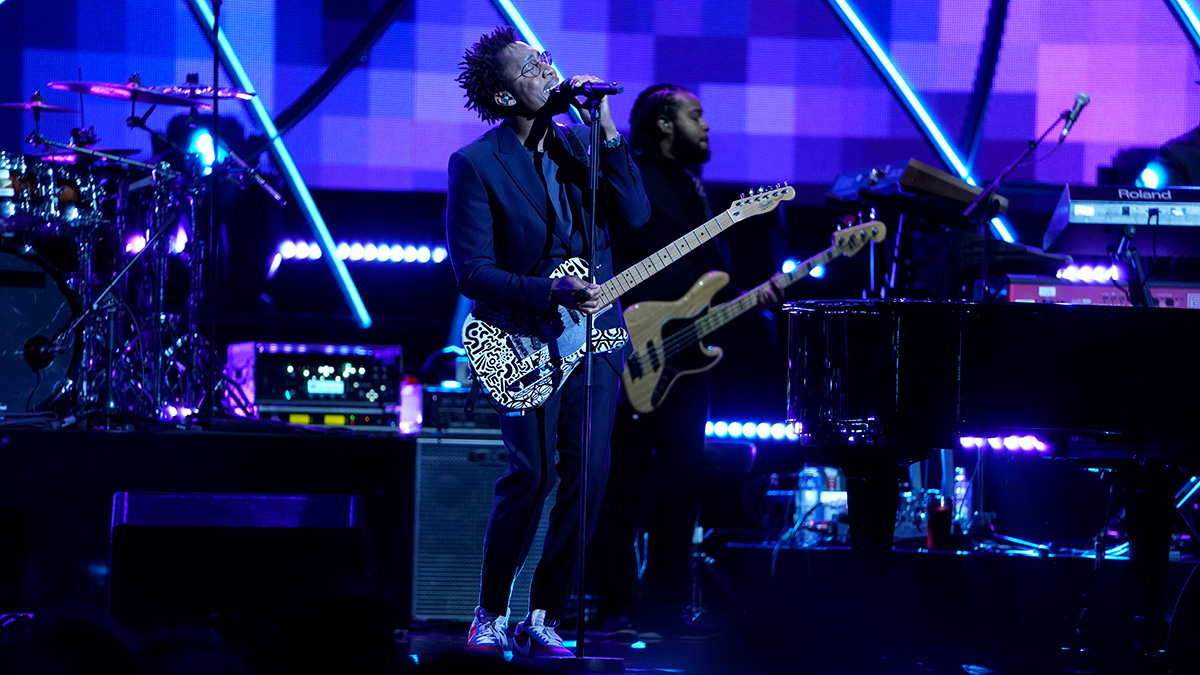“When you gonna be a frontman, I like frontmen that play guitars, not bass”: Super-producer Raphael Saadiq on why it's challenging to be a lead singer and dig in on bass at the same time
Saadiq reveals that while he played on Tony! Toni! Toné! records, he felt like he could never sing while playing bass live due to rhythmic differences

Nowadays, Raphael Saadiq is known as a multi-instrumental Grammy Award-winning producer for the likes of Stevie Wonder, Beyoncé and Mary J. Blige. But in his early years, he made his mark as a bassist, most notably fronting and playing bass in the group Tony! Toni! Toné! However, he recently admitted that being the lead vocalist while playing bass can be tricky – which was one of the reasons he decided to switch to guitar.
“When you gonna be a frontman, I like frontmen that play guitars, not bass,” he says on the Broken Record Podcast. “I mean, I love Larry [Graham], he plays bass, but it's hard to play bass and sing, [like] Bootsy [Collins], Level 42, Rush."
“I've played bass on one tour as a front, [and] singing in front. It's not easy. It's fun, but it's not easy. I want somebody to dig in on the bass when I'm singing. So I have to have the guy that relieves me, but he gotta be like that dude.”
Saadiq also reveals that he never played bass or guitar on a Tony! Toni! Toné! tour, despite playing on the records. “I didn't think I could do it, to be honest,” he admits. “You know, sometimes when you sing a word in the syllable, sometimes your fingers go with it. So you have to separate, like a drummer, you have to separate that [rhythm].”
Being a bassist first means that Saadiq approaches his guitar playing from a more rhythm-oriented point of view. “I love playing rhythm guitar – I’m probably more of a rhythm guy. I play more solos nowadays using different kinds of effects, but I come from more of a rhythm background," he said in a Guitar World interview earlier this year.
In fact, it was the reason why he decided to opt for a Telecaster, rather than say, a Strat. “For me, having played bass first, the Telecaster felt like a tougher instrument that would allow me to play hard.
“There’s something about a Tele when you plug into a Fender Twin. It just bites you in the middle and front, and then there’s that twang at the back,” he concludes.
All the latest guitar news, interviews, lessons, reviews, deals and more, direct to your inbox!
The studio wizard recently launched his own limited-edition Fender Telecaster, which pays tribute to his long and illustrious legacy.
Janelle is a staff writer at GuitarWorld.com. After a long stint in classical music, Janelle discovered the joys of playing guitar in dingy venues at the age of 13 and has never looked back. Janelle has written extensively about the intersection of music and technology, and how this is shaping the future of the music industry. She also had the pleasure of interviewing Dream Wife, K.Flay, Yīn Yīn, and Black Honey, among others. When she's not writing, you'll find her creating layers of delicious audio lasagna with her art-rock/psych-punk band ĠENN.


